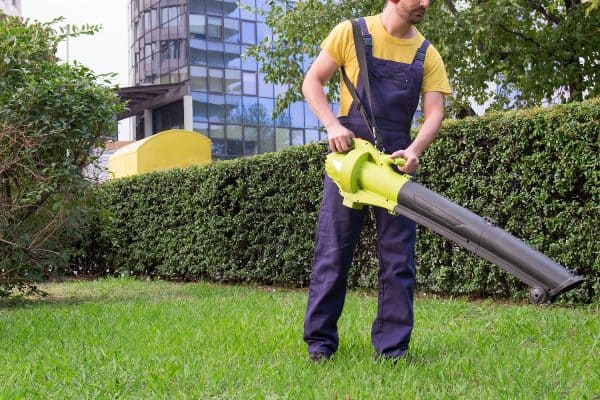Aside from being an excellent and appealing ornament, a bird bath is popular with people who love watching birds. And one question that homeowners often ask is whether a bird bath needs sealing. Well, you have come to the right place, for we have already researched the matter to help you!
Using a sealant on a bird bath made of concrete is a must. It is highly recommended to use one because your bird baths always submerge in water, and you need to reduce the porosity and avoid leaks by applying a concrete sealer.
One of the most important things to remember is that you should ensure the safety of the birds flocking in your bird bath. Please keep reading to know how to use a sealant, clean your bird bath, and learn its advantages and drawbacks.
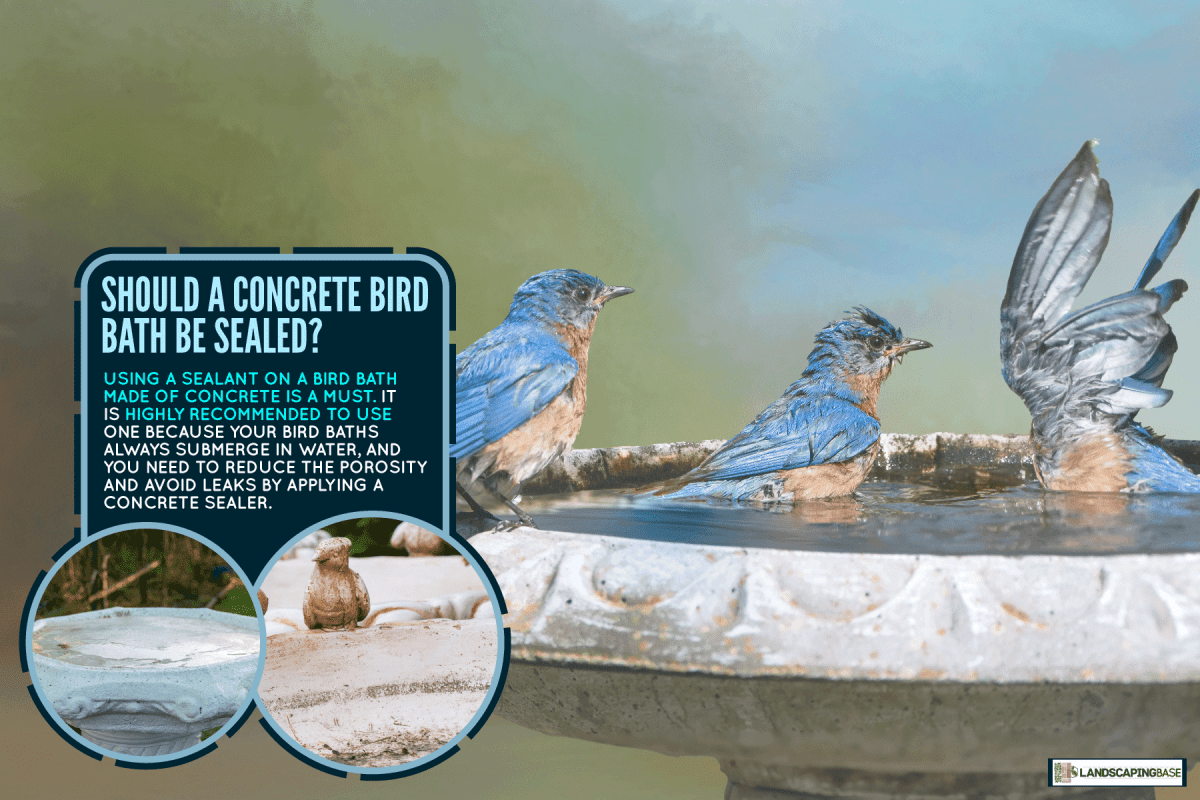
Why Is It Important To Seal A Concrete Bird Bath
Aside from reducing the porosity and preventing leaks from occurring, a sealed concrete bird bath can have a longer lifespan and ensure protection against cracking, water penetration, and the accumulation of fungus, mold, and mildew.
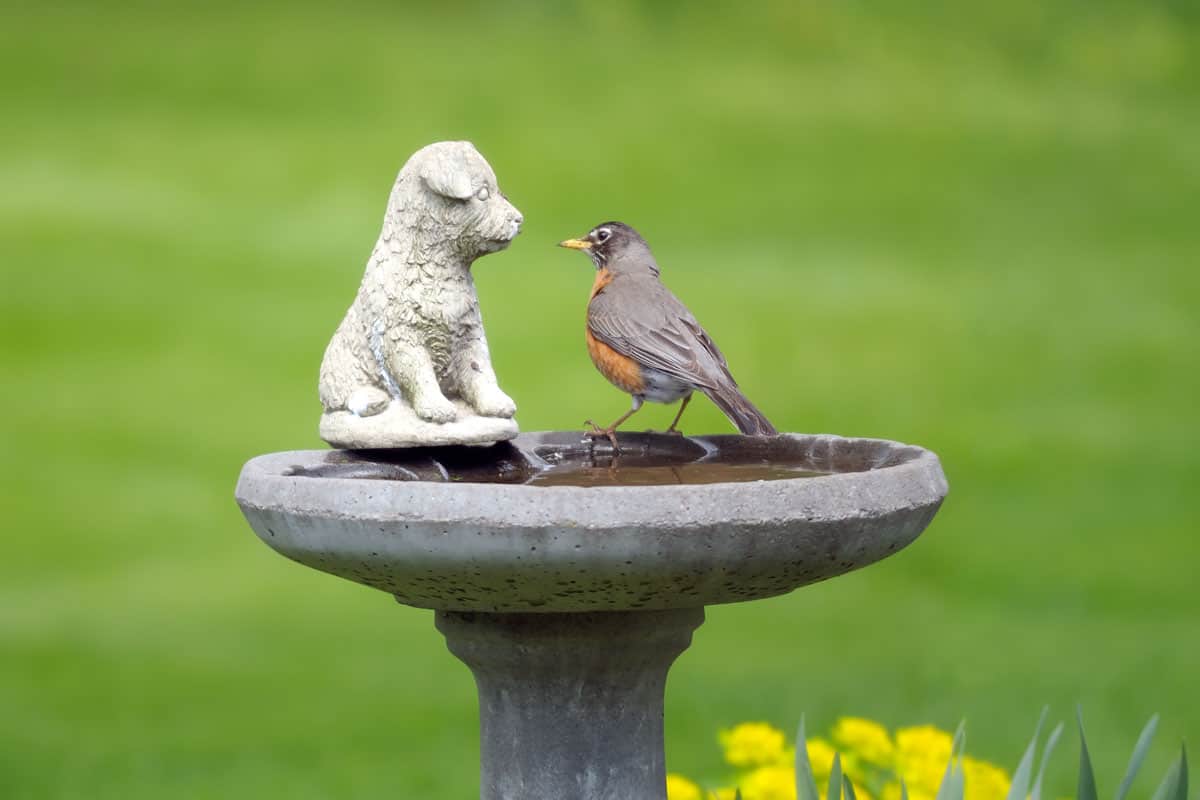
A sealant can also help prevent the bird bath from holding viruses and infections that lead to the birds contracting diseases.
How To Apply Sealant To Concrete Bird Bath
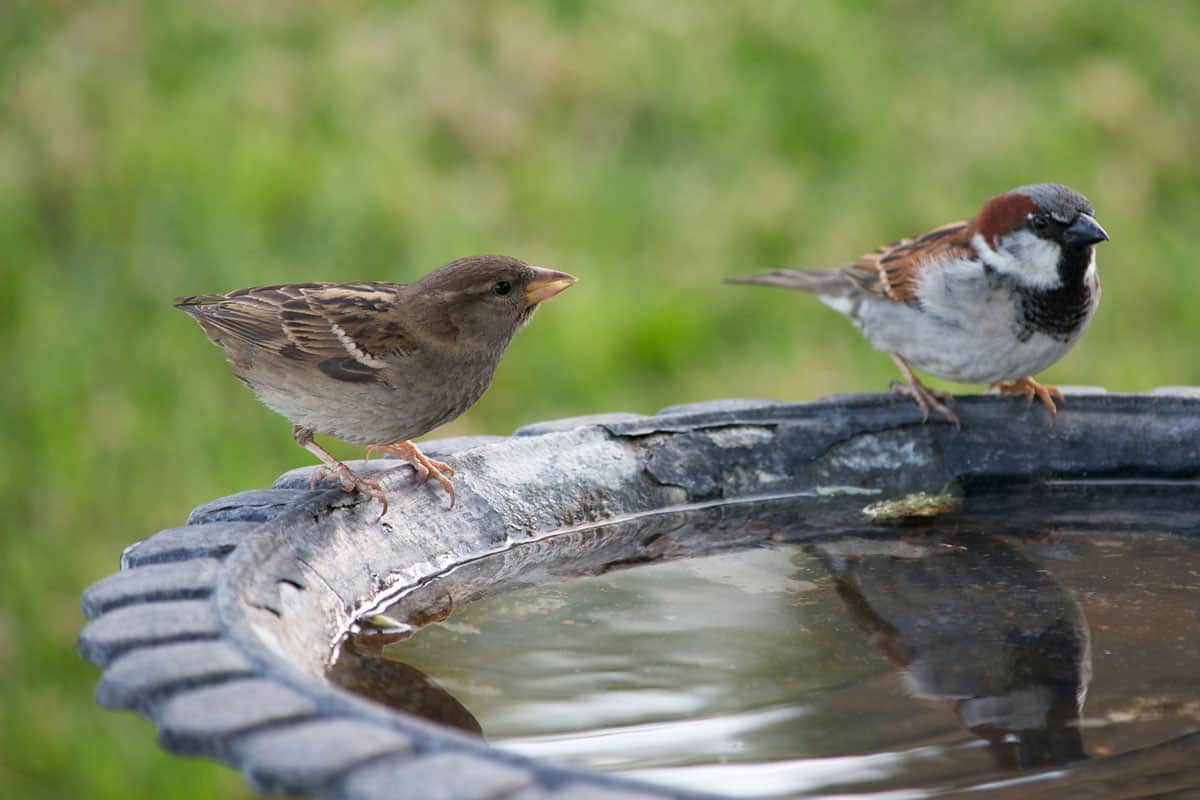
If you want to achieve a well-sealed bird bath, it would be best to follow the correct method below:
1. Thoroughly Clean Dirt And Mold
Before you do anything, we suggest you prepare a scrub brush, bucket, and cleaning agent first.
If you are not a fan of commercial cleaners, you can use vinegar or citrus to clean your bird bath. But if your bird bath has too many stains and is covered with mold and mildew, it would be best to utilize a more robust cleaning solution, like a non-toxic concrete cleaner.
If you choose the latter, please check the instructions on the manual, so you can use it correctly and prevent damaging the bird bath.
After brushing and cleaning the bird bath completely, rinse it thoroughly. Ensure that you have completely washed out the cleaner.
Click here to check out this multi-surface cleaner on Amazon.
2. Dry Completely
Before sealing the bird bath, you should let it dry out thoroughly. There are two things you can either do for this step.
- One, you can let your bird bath dry out in direct sunlight.
- Second, allow it to air dry.
3. Seal The Bird Bath
For the sealant application step, you must ensure that the temperature lies at least 50 degrees Fahrenheit. However, some concrete sealants have their considerations, so it is still best to check the application instructions.
Place the bird bath on top of a newspaper or cardboard to catch all the excess or dripping sealant later.
Apply the first coat of the sealant and let it dry before you paint the second coating. The typical drying time of concrete sealants can be anywhere between 30 minutes to an hour.
Check out this waterproof sealant on Amazon.
4. Let Sealant Dry Completely
In this step, it would be best to let the bird bath dry for at least two days. And to ensure that it is perfectly dry, you can try to sprinkle water on it and see if it is beading.
On the other hand, if it is still penetrating water, you should apply the third coating. Allow it to dry again. Once it becomes dry, place it back in the garden and let the birds enjoy the bird bath.
What Are The Advantages Of A Concrete Bird Bath?
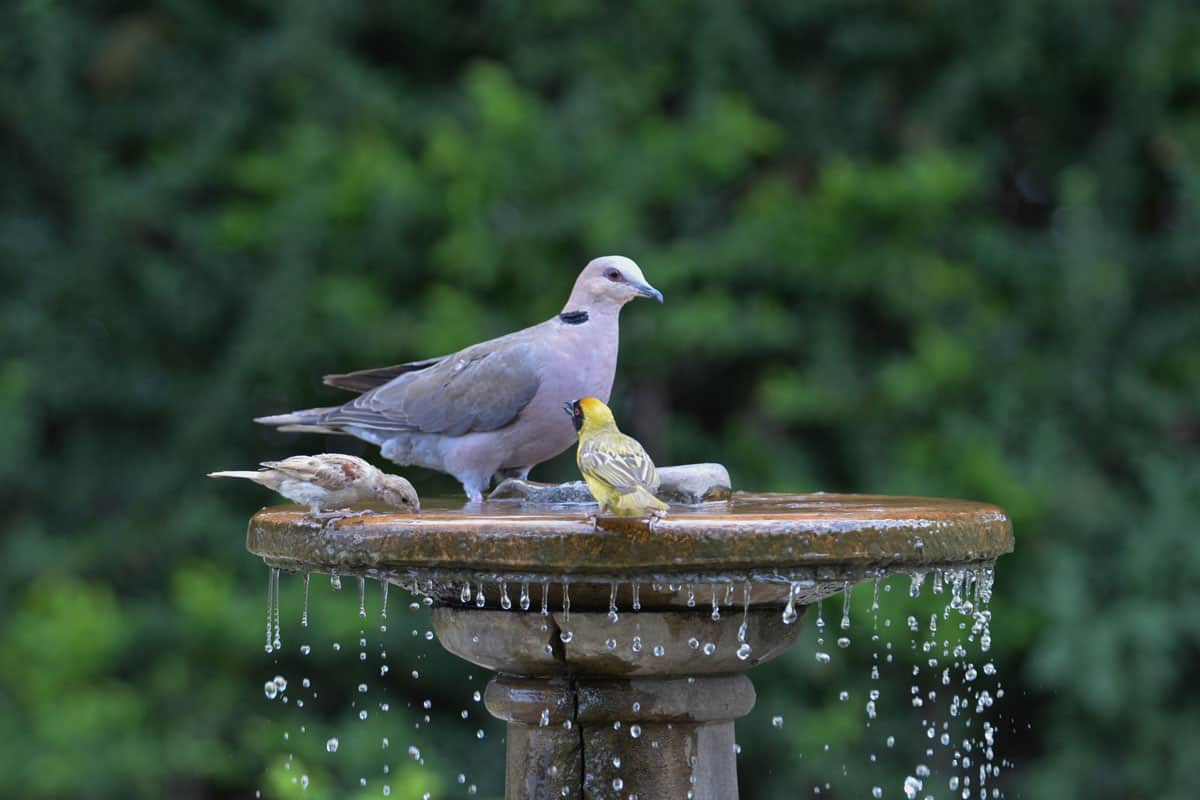
Having a concrete bird bath is a wise choice since it can provide the following benefits:
Durability & Sturdy Outdoor Ornament
Unlike any other materials, a concrete bird bath can last long since it can hardly break or chip. And you have to take care of it to achieve complete durability properly.
Even in windy areas, a bird bath won’t fall over. It is stable or sturdy, so bumping it when mowing or gardening is not a thing to worry about.
Many Design & Shape Varieties Available
There is a wide selection of concrete bird baths available. So you don’t have to worry about locating the perfect bird bath that will suit your taste and garden theme.
What Are The Drawbacks Of A Concrete Bird Bath?
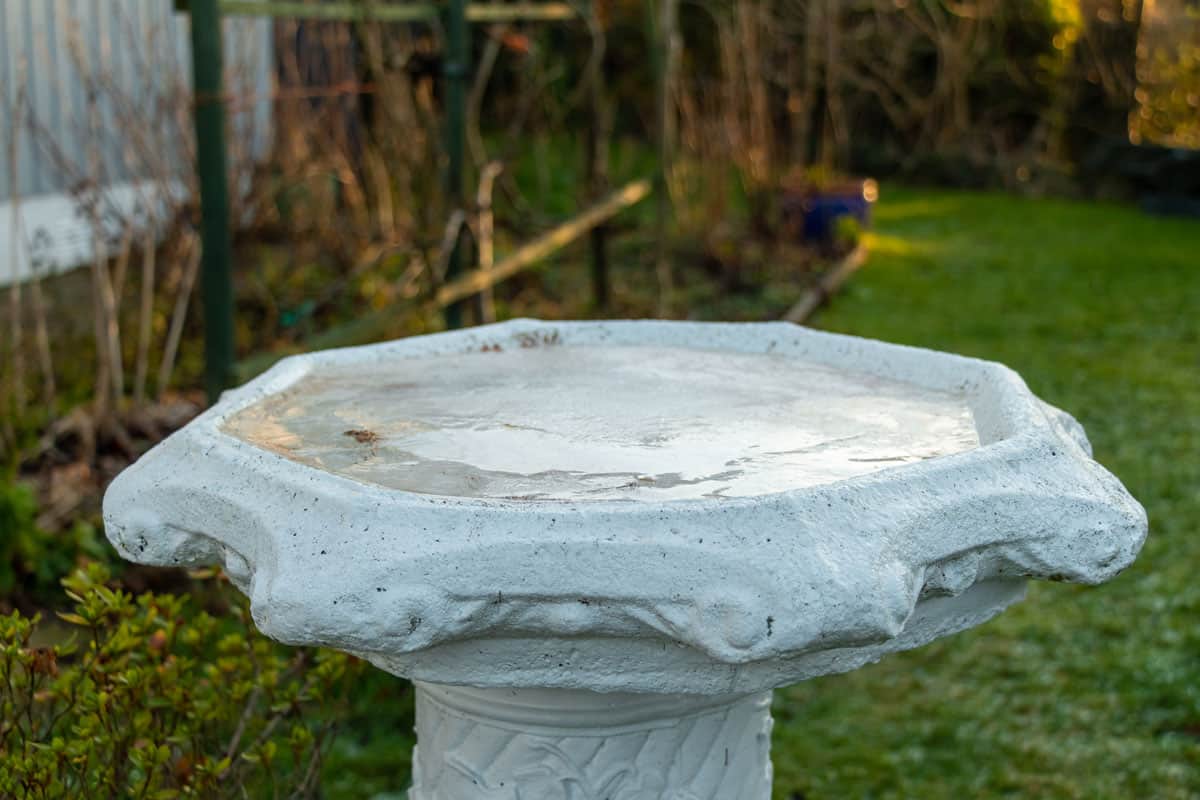
It is inevitable for a concrete bird bath to have drawbacks. Let’s find out these things and see if they can outweigh their benefits.
Heavy
Bird baths are indeed visually appealing ornaments. However, they are heavy, so expect you to have difficulty moving them from one place to another. You will also have trouble cleaning it and moving it into storage.
Easily Accumulate Algae
Porousness is the main reason why you should seal your concrete bird bath. Since concrete is permeable, algae growth is inevitable, especially if you don’t clean it regularly.
Prone To Leaks
If you don’t take care of your bird baths correctly, especially during cold seasons, it can quickly obtain cracks and chips, leading to leaks.
How To Properly Care For Bird Baths
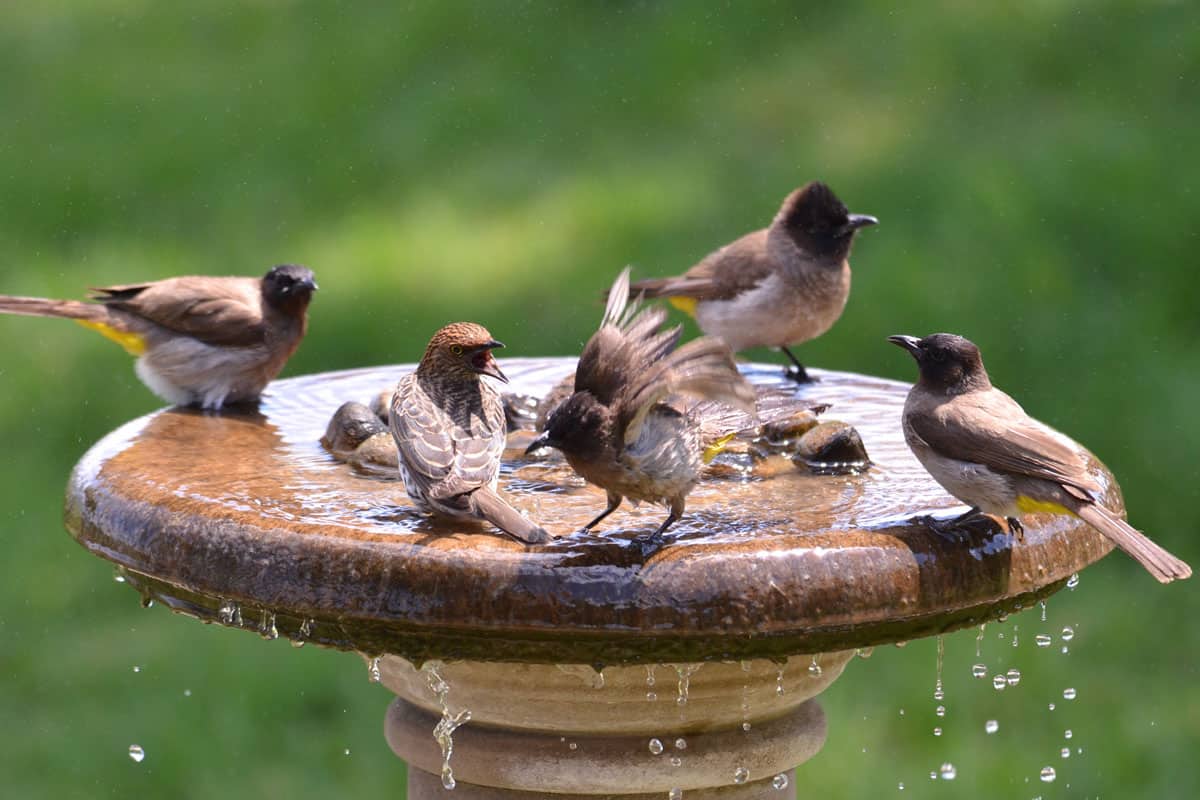
Since we have mentioned that maintaining your bird bath is a must to lengthen its lifespan, we will provide you below with some tips you should do to achieve its best condition:
- Regularly clean the bird bath to prevent algae from accumulating and making the water toxic to birds.
- You can place the bird bath in a shady area to reduce evaporation.
- You can keep a cleaner bath for longer if you place it away from feeders.
- Regularly refill the bath by disposing of the old, stagnant water and replacing it with clean water.
- Before you refill the water, using a pressure washer at its lowest setting would be best to quickly rinse the bird bath.
- You should also consider placing the bird bath away from the reach of pets and children to avoid contaminating the water.
- As much as possible, ensure that you place the bird bath away from falling leaves, grass cuttings, and other dirt- and debris-producing items.
- Do not let the water in the bird bath get low since this could lead to a buildup of harmful contaminants.
- Store your bird bath inside your garage during winter if you want to protect them from chipping and cracking. You can also cover it with plastic if you don’t want to move it inside. You have to use at least three layers of plastic. Lastly, ensure the bird bath is clean and completely dry before overwintering it.
- Place the bird bath on a flat surface and away from heavy traffic areas where it could be knocked or topple over.
- You can opt to add enzymes into the water of your bird bath. Check and purchase one in a pet shop near you. These enzymes can help in reducing mold growth.
- Add copper coins to your bird bath’s water to keep it clean and fresh. Read more about: ”Do Pennies Keep A Bird Bath Clean?”
Check out this enzyme-based bird bath maintenance on Amazon.
What Is The Importance Of Cleaning A Bird Bath?
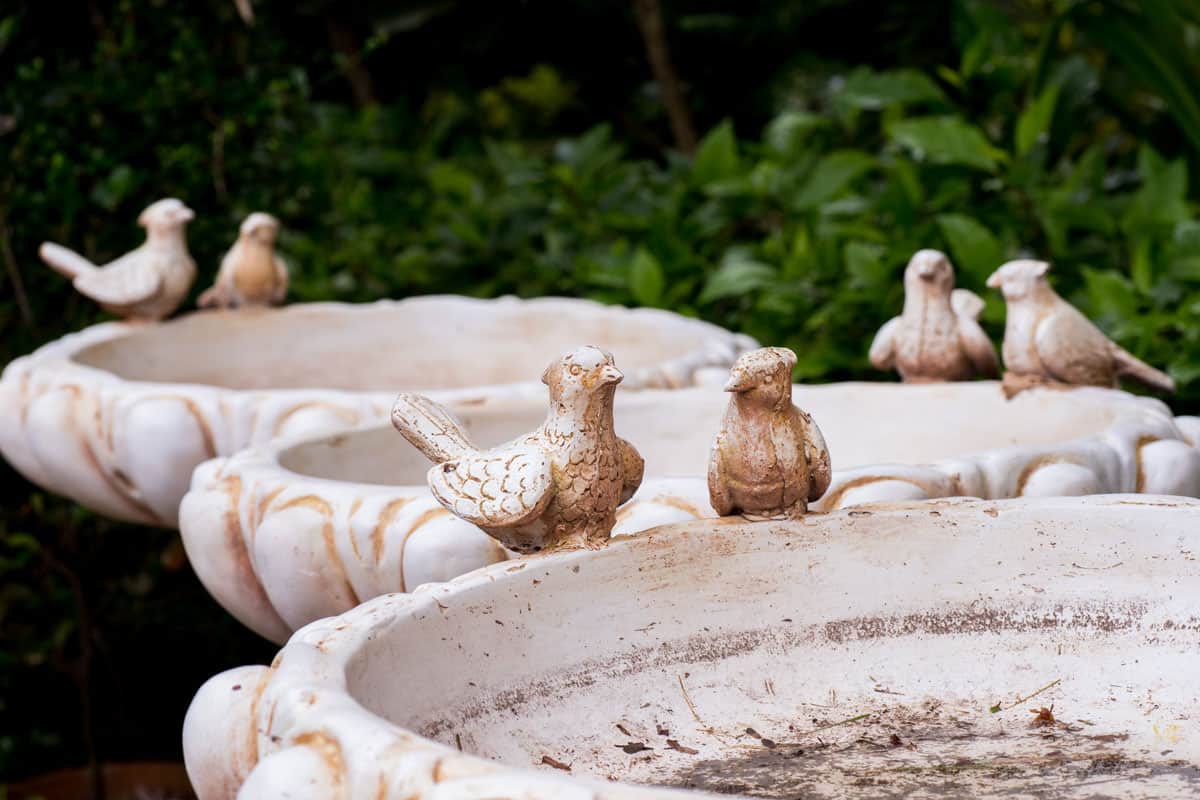
Just like humans, birds don’t wish to drink water that is dirty, toxic, and full of bacteria. Birds also need care and protection against pollutants and diseases, so it would be best to keep the bird bath clean.
Additionally, a clean and algae-free bird bath can prevent mosquitoes, gnats, and other insects from populating the water inside the bath, which can lead to diseases and harm humans.
Ignoring a dirty bird bath will also lead to an awful water odor and stains that are hard to remove, or worse, can be permanent, and you might never restore it to its original color and beauty.
Furthermore, keep in mind that a clean bird bath and water can encourage more birds and bring safety to all wildlife.
How Frequent To Clean Concrete Bird Baths
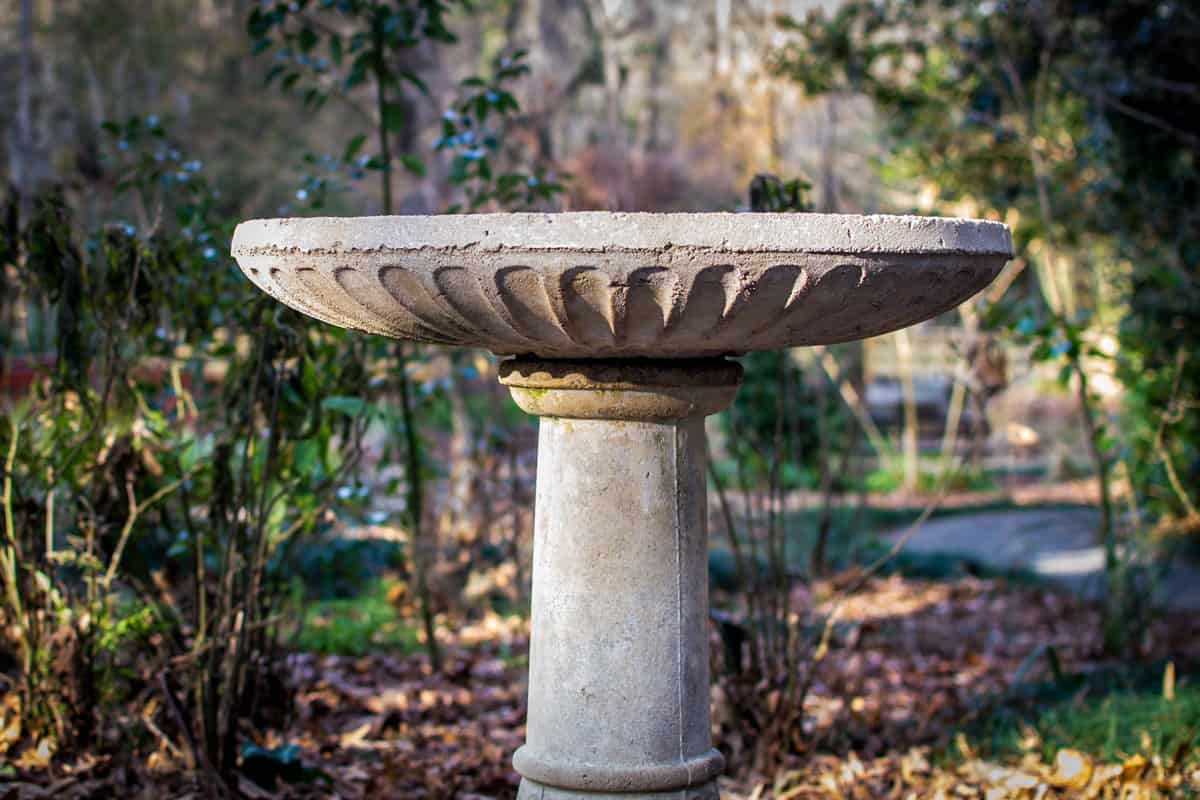
One of the most common questions homeowners ask when it comes to a bird bath is the frequency of cleaning it.
Well, cleaning a bird bath depends on several factors, and they are the following:
- the number of birds coming in and out of the bath
- weather conditions
- the location where you place the bird bath
- quality of water you put into the bird bath
However, as a general rule, you should clean the bird bath at least once a week or whenever you notice that the water seems to be changing in color.
Additionally, another factor you must consider is the falling leaves. If any of them fall into the bird bath, it would be best to clean them out immediately.
It’s A Wrap!
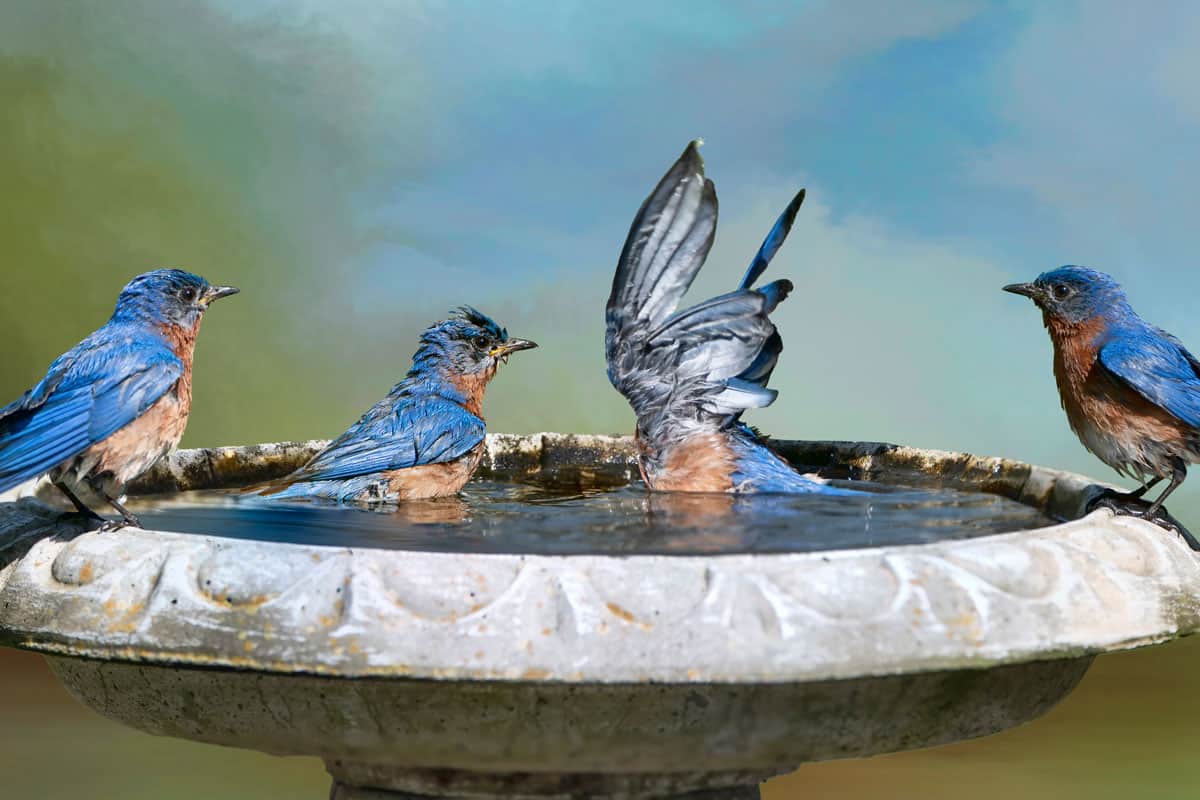
Sealing your concrete bird baths is highly advisable for complete protection against elements and concrete issues. Additionally, following the tips and guidelines provided in this post would be best to make the most out of your bird baths.
We hope you find this post helpful. If you still have additional concerns that you want us to discuss, please feel free to reach out in the comments. And to continue reading, check these posts out!




![A man using a portable vacuum to collect dead leaves, Will A Leaf Vacuum Pick Up Mulch? [Can It Remove Leaves From Mulch?]](https://landscapingbase.com/wp-content/uploads/2022/09/Man-using-a-portable-vacuum-to-collect-dead-leaves-600x400.jpg)

